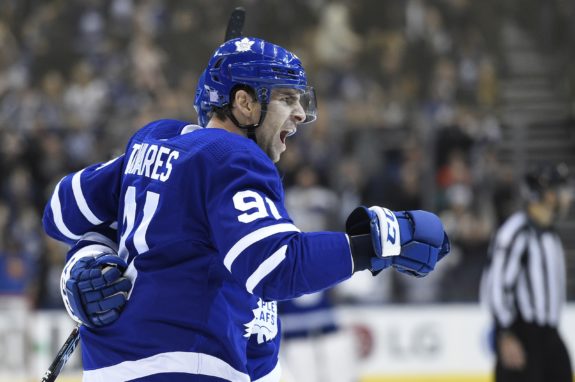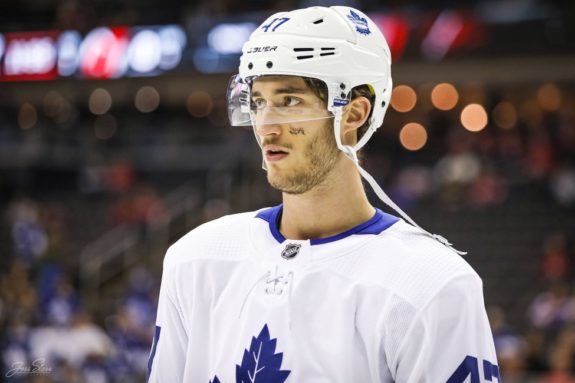On July 1, 2018, the Toronto Maple Leafs made the biggest splash in free agency for the first time in years. An improving team with a promising young core, they grabbed the big fish of the free agency class from that year, signing hometown boy John Tavares to a seven-year contract with an average annual value (AAV) of $11 million. It was a hefty price to pay for a player who didn’t address an immediate need, considering they already had Auston Matthews as their number one centre. But at the same time, it was just as much of a message to the fanbase that they were happy with the state of their team and confident enough to spend.

Fast forward four years later, and things haven’t gone exactly as planned. Not in terms of Tavares’ production, but rather the team in general. The Maple Leafs have reached the postseason four times since then, and each time they’ve gone out in the first round (or in the case of 2020, the play-in round). The Oakville native has delivered, producing at nearly a point-per-game (PPG) rate in every season since he became a Maple Leaf. His goal scoring rate has taken a dip since 2018-19, but other than that, he’s consistently been one of their top producers.
With the Maple Leafs headed into yet another season with all eyes on them and the stakes somehow higher than they were the year before, Tavares could be poised to have a big season, and perhaps be a little bit closer to the type of player he was in his first season with the team.
Tavares Must Use Proper Offseason to His Advantage
Game 1 of the first-round series between the Maple Leafs and the Montreal Canadiens in 2020-21 was a forgettable one for just about everybody involved with the team. That, of course, was the game where Tavares suffered a scary injury after taking Corey Perry’s knee to the head following a hit by Ben Chiarot. The injury happened only 10 minutes into the first period and ultimately removed him from the remainder of the series. Given the way the events transpired, the hit could have been much worse, so the fact that he only walked away with a concussion and a knee injury from the initial hit was a silver lining.
But because of that, the offseason that followed was focused around recovery just as much as it was around training for the upcoming season. And given that Tavares still finished the 2020-21 season with 76 points in 79 games, it’s impressive considering the detour his offseason training regime took. But with him fully healthy and having no lingering injuries to deal with over the summer, I would imagine he’ll be quicker on his feet out of the gate and won’t take long to find his stride. Obviously, he’s far from the first player to have an injury disrupt his training schedule, and that’s likely only a small part of why his goal scoring took a dip in 2021-22. Though, it’s a legitimate part of the equation and something that could work to his advantage this season.
Linemate Shift Could Benefit Tavares
Heading into the 2022-23 season, it’s safe to say that the first line will likely consist of Matthews, Mitch Marner, and Michael Bunting. It’s a combination that helped Matthews hit 60 goals, Marner flirt with 100 points (despite missing 10 games), and Bunting notch 63 points in his first full NHL season, so as the old saying goes, “if it ain’t broke, don’t fix it”. The second line, on the other hand, saw some inconsistencies throughout the season. While Nylander and Tavares have generally been productive together, it hasn’t been as consistent as Matthews and Marner. And while Alex Kerfoot and Ilya Mikheyev (at times) were fine placeholders in 2021-22, the lack of a more dynamic player may have hurt his production a little bit.

As much as I believe it would have been in the Maple Leafs’ best interest to sign or trade for a top-six forward this offseason, that doesn’t mean there aren’t internal options outside of Kerfoot that could work. Pierre Engvall has talked about wanting to take his offensive game to another level in 2021-22, and Nick Robertson is still waiting for a proper shot after being in the minors. Whether or not these players will have a direct impact on Tavares’ production remains to be seen, but a fresh face on that second line could provide a spark that maybe they’ve been missing over the past two seasons.
Tavares’ Production Still Solid, Even for His Price Tag
It can feel like Tavares has lost a step from time to time, at least compared to his debut season with the Maple Leafs. But I feel like a lot of that could be attributed to the aforementioned dip in his goal scoring. For reference, he’s carried a goal-per-game rate of 0.34 in his past two seasons, compared to 0.57 in 2018-19. On the other hand, he’s improved the playmaking side of his game. He tallied 49 assists in 2021-22, which was one short of his career high, and at the same time, Nylander found an extra goal-scoring edge to his game with 34 goals in 2021-22, which helped make up for the dip in Tavares’.
You May Also Like
- Maple Leafs News & Rumours: Matthews, Marner, Bunting & Steeves
- Kyle Dubas Never Promised Not to Trade William Nylander
- Frederik Andersen Trade Revisited
- Maple Leafs’ Trade For Coyotes Jakob Chychrun Makes Sense
Whether or not you believe his production has been worth the contract he signed to date, you can decide for yourself. But for every Matthews and Connor McDavid around that dollar figure, there’s an Erik Karlsson or Jonathan Toews making nearly the same amount. While his production certainly could be better, he’s been a consistent near-PPG player every year since he signed in Toronto. And even though he’s on the wrong side of 30 now, there’s nothing that would suggest he’s already hit his peak. Steven Stamkos just hit 100 points for the first time in his career at age 32, and although he likely won’t hit 100, it’s not unreasonable to suggest that Tavares could take a big step forward in 2022-23 at age 31.